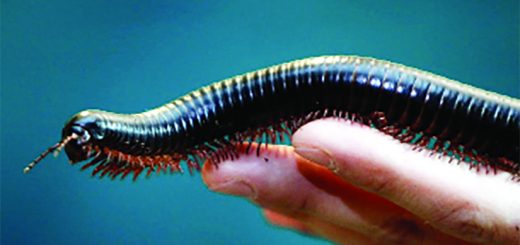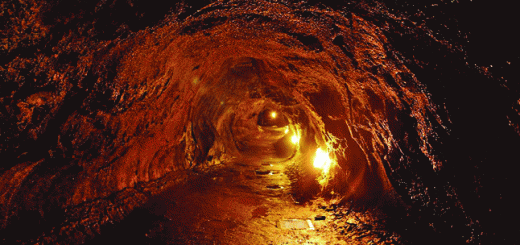This tube worm’s glowing slime may help sustain its own shine
Predators that tread on a colony of parchment tube worms may find themselves slimed. The worms get their name from the papery tubes in which they live. When threatened, these ocean creatures ooze a sticky mucus that can glow blue for days.
Such light produced by animals, bacteria or algae is known as bioluminescence (BY-oh-loom-in-ESS-ents). Typically, it’s gone in a flash. Like the blinking light of a firefly. But the mucus oozed by Chaetopterus tube worms is unique. With them, “We have easily 16 hours and sometimes 72 hours of light,” says Evelien De Meulenaere. She’s a biochemist who works at the Scripps Institution of Oceanography. It’s in La Jolla, Calif. Her team’s new results suggest that the slime’s own light may help it shine on. That light seems to trigger chemical reactions that sustain the glow.
Making and sustaining bioluminescence requires energy. What powers the slime’s glow is a mystery. Since it happens outside the body, it isn’t drawing energy from the worms. To unlock the goo’s secrets, scientists are digging into its chemistry.
De Meulenaere and her team exposed the slime to blue light. That caused a spike in the goo’s glow. “That’s the weirdest thing,” she says. “The mucus produces blue light itself. So is it powering itself?”
Slime detectives
To find out, her group separated molecules from the mucus based on size and other traits. That let them identify proteins, sugars and metals in the slime. A reaction involving an enzyme makes the light. Iron emerged as a possible sidekick in helping the glow last. The mucus contains ferritin. This protein stores iron. Ferritin slowly releases electrically charged iron atoms, known as iron ions. Those ions can trigger the mucus to emit bursts of blue light, the team reports.
Ferritin seems to respond to blue light. This protein releases the ions more quickly in the presence of another molecule, one that absorbs blue light. That suggests that light from the slime may help trigger the production of more light. And this seems to sustain the glow. The team had planned to present its findings in early April at Experimental Biology 2020. But that meeting was canceled due to the COVID-19 pandemic. An abstract describing the research appeared April 18 in The FASEB Journal.
A marine parchment tube worm, shown here under natural light, makes a glowing mucus. The slime sticks to predators that threaten the colony and may serve as a natural “burglar alarm.”
The goo’s glow was first investigated in the 1960s, points out Warren Francis. Afterward, it was largely forgotten, notes this biologist. He works at the University of Southern Denmark in Odense and did not take part in the new study. The Scripps group’s work is shedding light on the slime’s enduring shine, he says. But, he adds, the data don’t yet paint a clear picture of the roles that blue light and ferritin play in the glow’s chemistry.
“Understanding how it works gives us a big clue to how these animals function in their own world,” he says. And it could help people, too. The bioluminescence of jellyfish and fireflies have given biologists tools to study the inner workings of cells. If scientists can crack the worms’ glow, Francis says, “there’s potentially huge numbers of applications.”
Perhaps someday, the study authors suggest, the snot’s secrets could help create a long-lasting light that glows on and on.
















Recent Comments